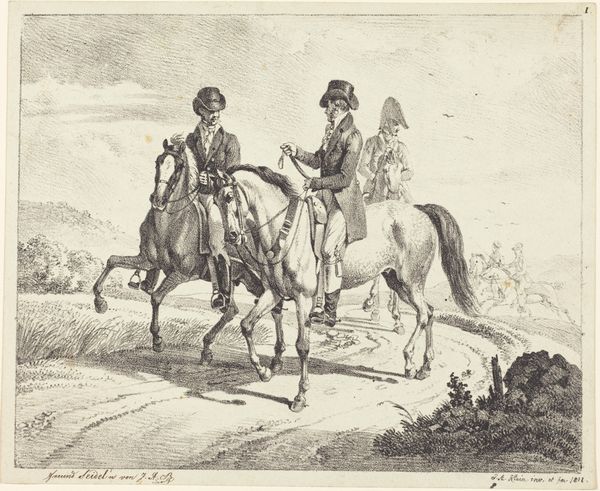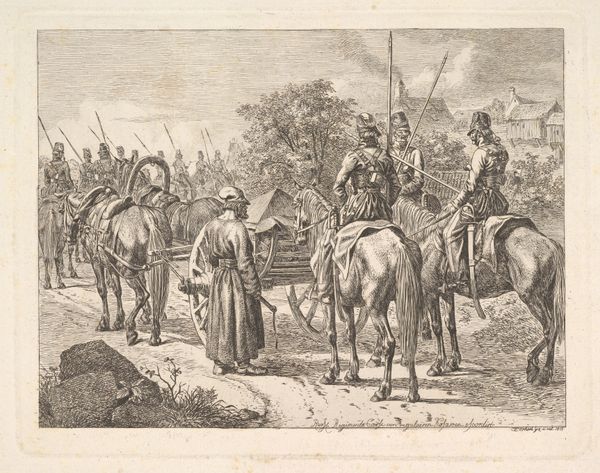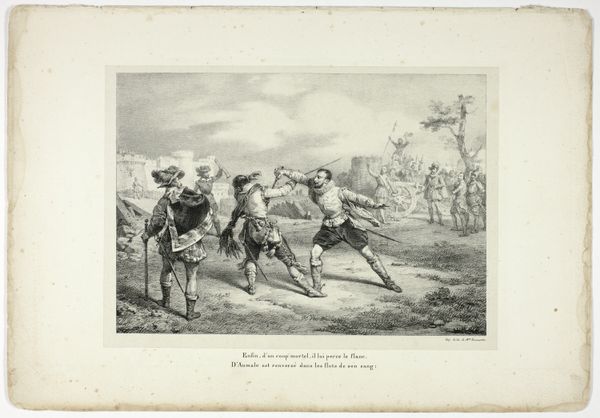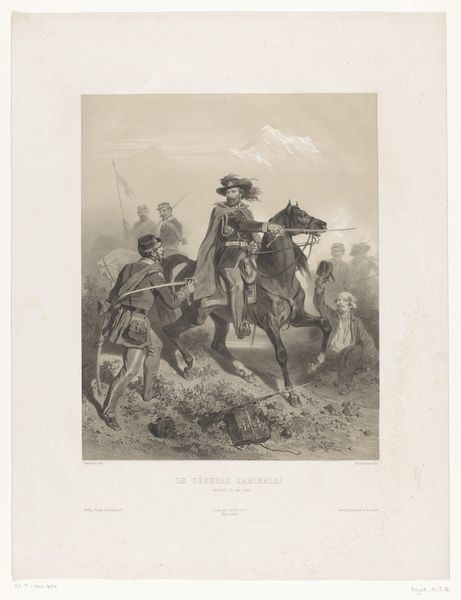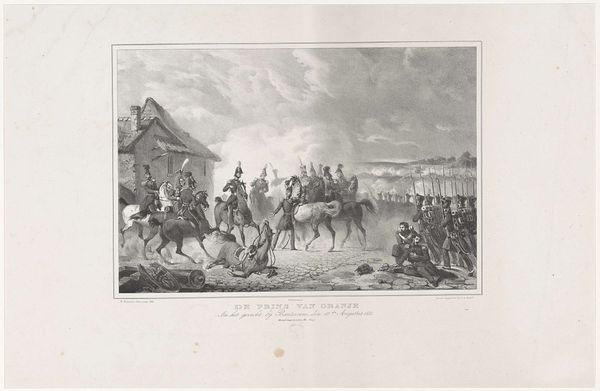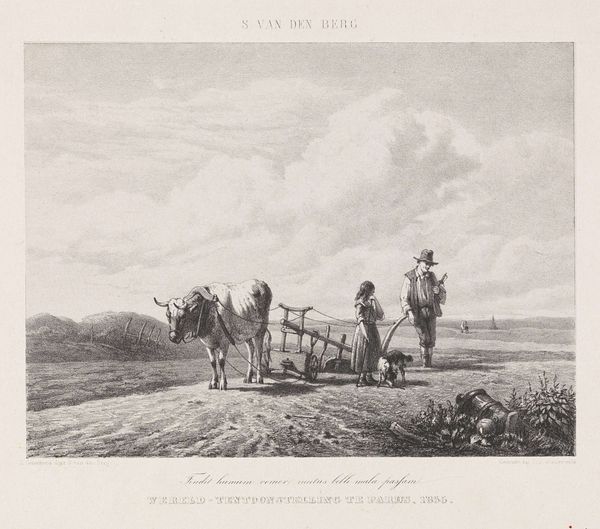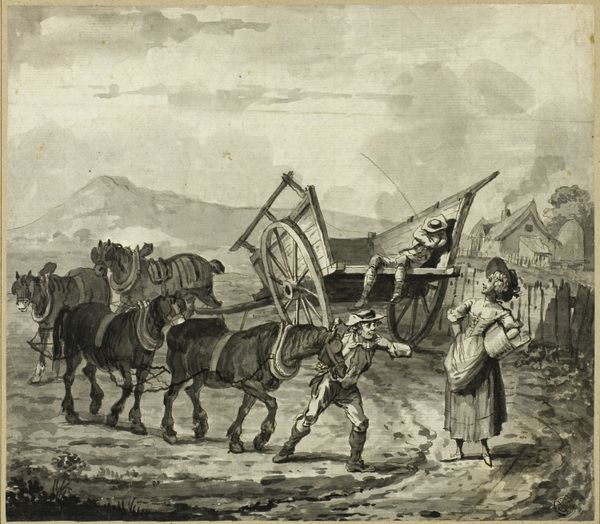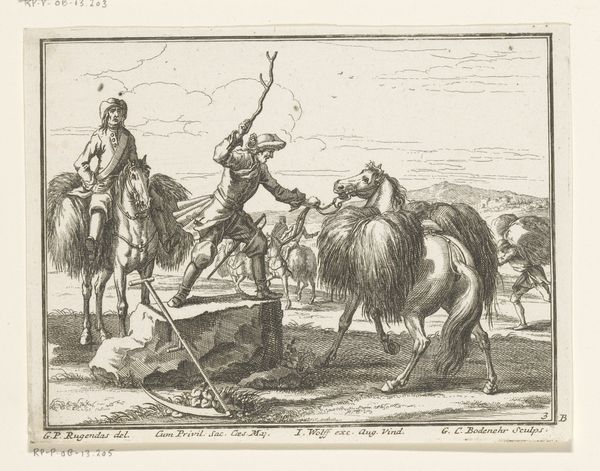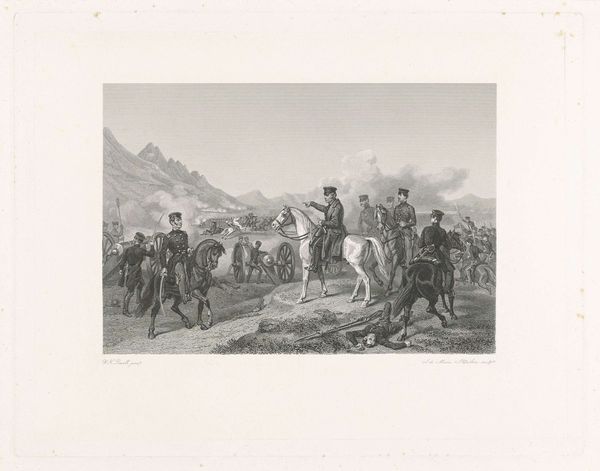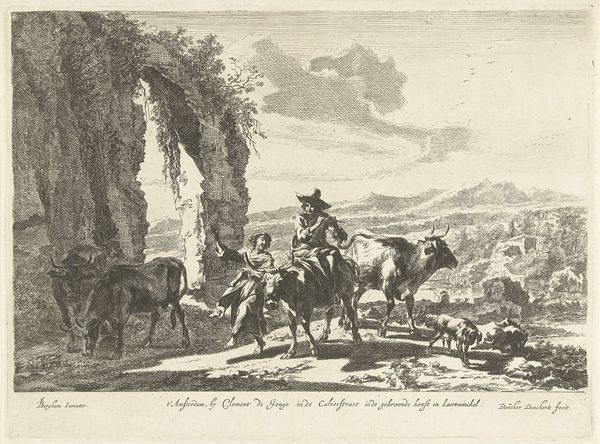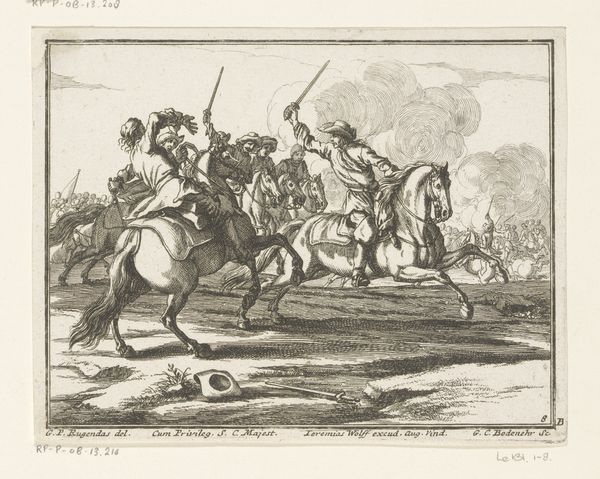
Dimensions: height 351 mm, width 522 mm
Copyright: Rijks Museum: Open Domain
Albertus Anthonius Nunnink made this print of the Landing van prins Willem III in Torbay in the 19th century. It encapsulates a pivotal moment in British history, the so-called Glorious Revolution of 1688, when William of Orange landed in England to depose King James II. The image creates meaning through its depiction of William as a heroic figure, leading his troops onto English soil. The landscape and the presence of English supporters suggest a narrative of liberation and welcome. This event was a watershed moment in the development of constitutional monarchy and parliamentary democracy in Britain. Prints like these played a crucial role in shaping public opinion and historical memory. They were visual tools for constructing national narratives. Historical research into the social and political context surrounding this event, including pamphlets, speeches, and other visual representations, helps us understand the multifaceted meanings of this print. The meaning of art is always contingent on its social and institutional context.
Comments
No comments
Be the first to comment and join the conversation on the ultimate creative platform.

